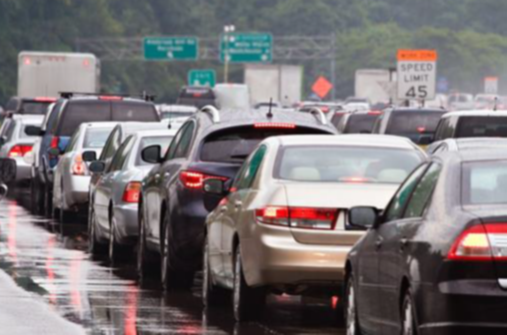Transportation Officials Announce "Stunning" Findings in I-95 Congestion Study
/“For years, the accepted thinking was that the only way to relieve congestion on I-95 was to add a lane in each direction from border to border. After a detailed study of alternatives, we have determined that strategic, directional widening on I-95 between New Haven and New York can significantly reduce congestion and can be built within existing right of way.” Those comments, from Connecticut Department of Transportation (CTDOT) Commissioner James P. Redeker , accompanied the release of a study on the impact of widening and improving both the western and eastern portions of Interstate 95 in Connecticut, and which also outlined “the consequences of failing to act.” The report indicated that “limited, directional and strategic widening yields major benefits.”
Redeker added that “Similar strategic, localized investments can also reduce congestion between New Haven and Rhode Island. These findings indicate that we can achieve congestion relief through strategic and much less costly investments far sooner than previously thought. In addition, the return on these investments would far exceed the cost of the projects.”
Currently, peak morning and evening congestion on the highway accounts for 54 million hours of delay and costs $1.2 billion in lost time annually. Key areas studied were Fairfield to Bridgeport Northbound (6.3 miles), Stamford to New York Southbound (9.3 miles) and Stamford to Fairfield Northbound (11.1 miles). The report noted that safety, as well as travel time, was a key element in the recommendations. For example, from Branford to the Rhode Island border, it was indicated that there were 3,380 crashes during 2014-2016, including 997 injuries and 23 fatalities.
The I-95 widening projects were included in the $4.3 billion in projects canceled or suspended by the CTDOT last month because of what the Governor’s office described as “long-term failure to adequately fund the Special Transportation Fund.” The Governor’s revenue proposal – which includes a seven-cent increase in the gas tax over four years and the implementation of electronic tolling – would allow for these investments to go forward, the Office said.
“CTDOT is excited to announce that after a detailed study of options for relieving congestion on I-95, we are able to report a stunning set of findings,” Commissioner Redeker said in releasing the report.
Among other findings, the report notes that just one of the projects proposed – adding one northbound lane between exits 19 and 28 – would reduce travel time from the New York border to Bridgeport from 63 minutes – if no improvements are made – to 41 minutes during weekday afternoon peak times. .Short-term, mid-range and long-range options were presented for I-95, including exists 54 to 55, 88 to 90, 80-74 80-82A, and the I-95/Route 32 interchange. Long-range improvements from exit 54 to 69 “requires further study” the report said. It also called for “strategic improvement” Northbound from Exit 19 to 28 to “remove bottleneck.”
In announcing the report’s findings, Governor Malloy warned that without legislative action this session to shore up the Special Transportation Fund (STF), this type of investment will be impossible.
“These improvements shouldn’t be seen as optional,” Malloy said. “But without new revenue to stabilize the Special Transportation Fund, critical projects like the I-95 widening will not be possible. I put forward a reasonable proposal last month, and I look forward to working with the legislature this year to find real, long-term transportation solutions.”
“Connecticut deserves this rational, sensible and cost-effective investment to support our economic growth,” Redeker added. The DOT first announced a study of the I-95 corridor in October 2016.





























